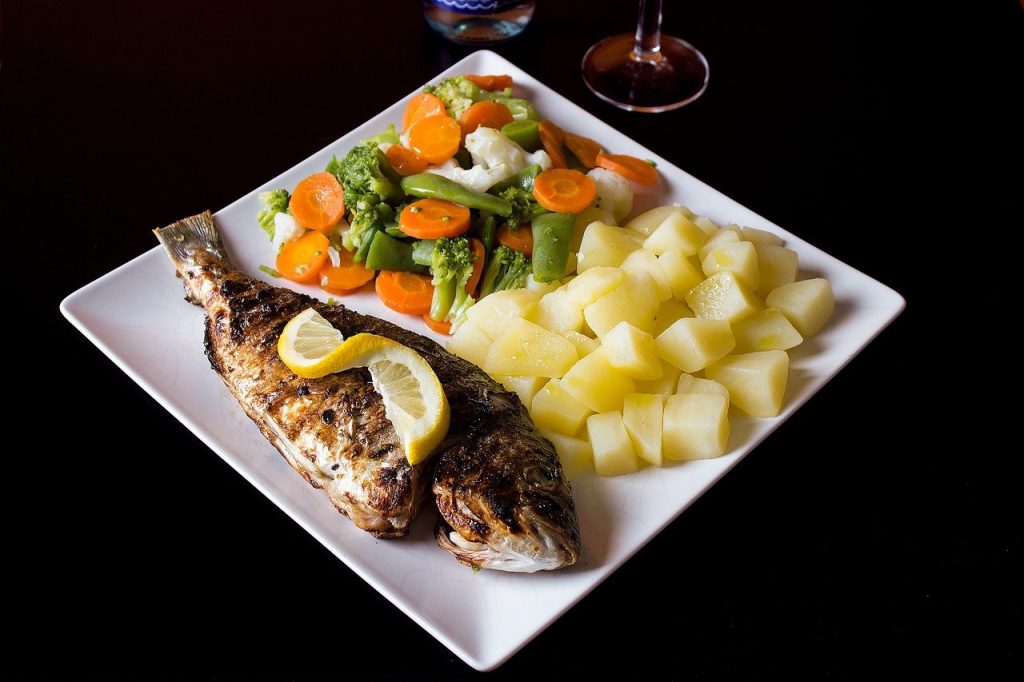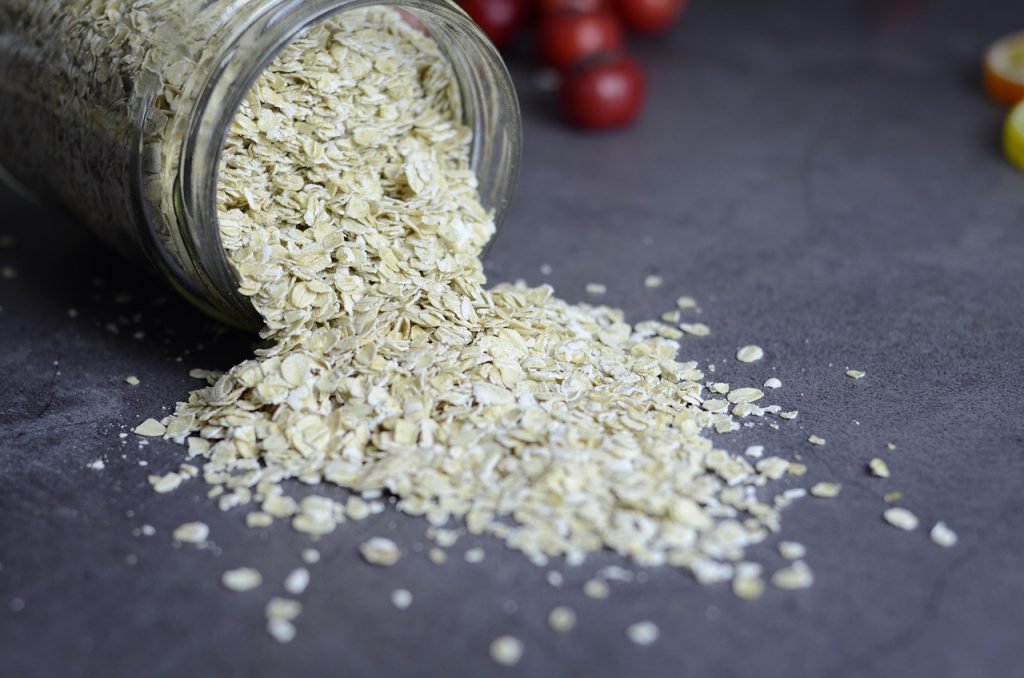[Article updated on 19/09/2023]
One of the most well-known and widely followed diets that exist today is the paleo diet. It’s a revolutionary method that is based on what our ancestors ate during the Paleolithic, hence the name of this diet. Therefore, we are faced with a diet based mainly on the consumption of meat, fish, fruits and vegetables, that is, everything that can be obtained from hunting and agriculture . In this article, I take you to discover what the paleo diet is, as well as its advantages and disadvantages.
What is the paleo diet?
The Paleo diet or Stone Age diet is based on the following postulate. The genetic nature of human beings leads them to eat meats, fish, seafood, vegetables and fruits among others. The paleo diet considers that the foods most suitable for humans are those that were available during the Paleolithic era.

This diet does not admit foods such as cereals, dairy products and legumes. This diet suggests avoiding sugars and processed foods in general. It does not allow foods considered healthy such as legumes, grains and dairy products.
How was the paleo diet or caveman diet born?
According to the developers of the paleo diet, around 50,000 years ago, ancestors already had an omnivorous diet and lived by hunting and gathering. About 10,000 years ago, most of the world discovered agriculture. The world then moved from the Paleolithic to the Neolithic.
Animal husbandry and agriculture provided humans with a constant and relatively reliable food supply, without which civilization could never have developed. Many believe that the shift from a hunting-and-gathering diet (rich in wild fruits and vegetables) to an agricultural diet (rich in grains) led to the emergence of new modern chronic diseases such as obesity, diabetes and cardiovascular diseases.
This is one of the main reasons why paleo diet proponents say we need to return to a meat and produce-based diet like that of the ancestors.
Paleo: the most natural diet
Proponents of the Paleo diet defend the idea that the Paleolithic human diet did not contain flours, sugars or dairy products. These foods would have been incorporated into the human diet much later. They would therefore be very recent in human evolutionary history.
This type of diet includes large amounts of animal protein. This includes fatty parts and vegetables, whether fresh or frozen. This diet eliminates packaged goods from the shopping list, choosing only fresh foods. It also recommends that meat come only from grass-fed animals. The paleo diet also requires that fruits and vegetables be in season and, preferably, from organic production. All men’s diet should therefore be as natural and as less processed as possible.
Saturated fats are allowed. In fact, animal fat is fine as long as it comes from healthy animals. Fruits low in fructose and rich in antioxidants are preferable. This is also the case for seeds rich in omega 3 fatty acids, such as walnuts and almonds. Extra virgin olive oil is very suitable for seasoning vegetables and salads.
How it works ?
In the Paleolithic diet, the consumption of only natural foods and of animal and plant origin is recommended, as they provide the nutrients necessary for the proper functioning of the body.
There is no pre-established period for the diet to be followed, as it is a natural and healthy diet. However, before starting the Paleolithic diet, it is important to consult a nutritionist so that a general health assessment can be carried out. As it is a high protein diet, it may not be suitable for people with kidney problems or osteoporosis.
The foods included in this diet are rich in fiber, protein, vitamins and minerals. It is possible to reduce the risk of chronic diseases because it prevents the deposition of fat in the vessels and promotes the regulation of blood sugar levels. It is indeed rich in fiber. Additionally, this diet can also help with the muscle building and weight loss process, as protein and fiber increase metabolic activity and promote a greater feeling of fullness. They act like best appetite suppressants to prevent you from snacking between meals.
Paleo diet: contraindications
The contraindications of the paleo diet are essentially the same as those of the others high protein diets which almost completely eliminate important nutrients such as carbohydrates. They are therefore not balanced and do not instill correct dietary education. In the long term, harmful effects are observed on the kidneys and the liver which are forced to eliminate too many substances deriving from the metabolism of animal proteins, in particular uric acid.
Absolutely avoid if you already suffer from kidney and/or liver problems. Headaches, mood disorders and increased cholesterol and triglycerides may also occur.

Difference between the Paleolithic diet and the low-calorie diet
The main difference is that in the paleo diet you have to avoid all kinds of high-carb grains. For example, you should avoid rice, wheat, corn and oats. Gold in a low-calorie diet, these cereals can still be eaten in small quantities a few times a week. .
Additionally, the low-calorie diet allows the consumption of processed foods, as long as they are not high in sugar, flour and other carbohydrates. But in the Paleolithic diet, the ideal is to reduce the consumption of processed foods as much as possible.
Foods to avoid
The following foods are not present in the Paleolithic diet. If you follow this diet, it is best to avoid these foods:
- Cereals and foods containing them : rice, wheat, oats, barley, quinoa and corn;
- Legumes : beans, peanuts, soybeans and all products such as tofu, peas and lentils;
- Sugars and any food or preparation containing sugar, such as biscuits, cakes, pasteurized juices and soft drinks;
- Milk and dairy products, such as cheeses, yogurts, heavy cream, condensed milk, butter and ice cream;
- Processed foods and packaged;
- Fatty meats such as bacon, bologna, sausage, turkey and chicken skin, ham, pepperoni, salami and canned meat;
- Salt and foods containing them.
The advantages of the paleo diet
Proponents of the paleo diet claim that this type of diet has the following health benefits.
- The paleo diet maintains energy balance throughout the day;
- You get stable and adequate blood sugar levels;
- It improves skin and teeth;
- In the case of people who play sports, training is more effective and easier to carry out;
- It reduces allergies;
- The paleo diet acts as a powerful fat burner. You burn accumulated fat and therefore you lose weight and prevent obesity in the long term;
- The combination of meat and fish with vegetables and fruits is satisfying enough that people who need to control their weight do not go hungry;
- The paleo diet promotes rest and quality sleep.
Disadvantages of the paleo diet
Despite the many benefits of this diet, it also has some health disadvantages. Among the disadvantages of the paleo diet are the following points:
Heart problems
This diet is based on foods high in animal protein such as seafood, lean meat, eggs or fish. It can cause an increase in bad LDL cholesterol, lower good HDL cholesterol and increase the risk of heart disease.
Kidney problems
With so much protein, the kidneys have to work harder and remove more urea through the bloodstream.
Fatigue
When grains, starches, and legumes are eliminated, some people may experience fatigue, irritability, or tremors. These symptoms can last three to four weeks.
Vitamin D deficiency
This lack of vitamin D occurs in the short term but can be compensated for by supplements or sun exposure.
Hypothyroidism
Some people who switch to a low-carb diet may experience long-term symptoms of hypothyroidism because by losing a lot of weight, the body reduces thyroid function in order to conserve energy.
Cravings
One of the features of this diet is that you tend to have many cravings, especially for sweets, because any type of sugar is completely removed.
Ketosis
This is a process that occurs when this diet is implemented in low fat people. It can cause bad breath, dizziness and even insomnia.
Yo-yo effect
Like many others, the paleo diet does not protect you from the yo-yo effect. As soon as you return to your pre-Paleo diet eating habits, you tend to quickly regain the lost pounds.

Is the paleo diet effective?
The effectiveness of the paleo diet no longer needs to be proven. This diet that teaches you how to eat well again actually makes you lose weight. And if you follow it well, you won’t regain the excess pounds you lost.
Duration of the paleo diet
The paleo diet certainly has principles but it is not restrictive or frustrating. It’s not complicated to follow and you can eat paleo for quite a long time! However, everyone has their weight loss goals. If yours are achieved, you can choose to stop the diet if you wish. Please note, specialists do not recommend following the paleo diet for more than 31 days in a row.
Special menus and recipes for the Paleolithic diet
The following table gives an example of a 3-day paleo diet menu:
| 1st day | Day 2 | Day 3 | |
| Breakfast | Sugar-free coffee + 2 scrambled eggs with diced tomatoes and onions + 1 apple | Unsweetened coffee with natural almond milk + spinach omelette + 2 slices of avocado + 1 orange | Unsweetened coffee with natural coconut milk + fruit salad |
| Morning snack | 1 handful of dried fruits | 30 grams of coconut pulp | Avocado smoothie with natural almond milk + 1 tablespoon chia seeds |
| Lunch | 150 g of meat + chard + tomato + grated carrots and beets + 1 drizzle of oil + 1 tangerine | 150 grams of salmon with asparagus sautéed in olive oil + 1 pear | Zucchini noodles with 150 grams of ground beef with natural tomato sauce + raw salad seasoned with olive oil + 1/2 cup chopped strawberries |
| Afternoon snack | 1 roasted banana with 1 teaspoon chia seeds | Carrot and celery sticks with homemade guacamole | 1 hard-boiled egg + 2 medium peaches |
| Dinner | grilled fish with seasonal vegetables | vegetable soup with a choice of cold meats | vegetable cutlets |
Good to know
The quantities on the menu vary according to age, gender, physical activity and state of health. It is therefore important to go to a nutritionist or other health professional. The latter will give you a complete assessment and establish the nutritional plan best suited to your needs. It is important to remember that before starting any diet it is necessary to speak with the doctor and nutritionist to assess health and receive specific advice for each case. In addition, drinking plenty of water and practicing regular physical activity are attitudes that also help lose weight and prevent diseases.
Opinions of health professionals on the paleo diet
The Paleolithic diet is very popular and controversial. Little or not balanced, it offers little variety. For this reason, despite the good initial weight loss due to the extreme reduction of carbohydrates and the satiating power of meat, patients tend to regain the lost weight. This diet is also expensive and if you really want to start it, you need excellent health condition. The paleo diet should not be followed for more than a month and DIY should be avoided.
Being excessively high in protein, the paleo diet can have side effects typical of a high-protein diet. Lack of milk and dairy products could lead to calcium deficiency. It is better to opt for other alternatives. For example the Mediterranean diet or the Dash diet are safer and have proven health benefits.
User reviews of the paleo diet
Jean, a fan of the paleo diet, ensures that this diet is hyper-nutritious and helps restore hormonal balance. He adds that the paleo diet is also hypotoxic because it reduces the toxic load of the diet on the body. Eating paleo allows you to avoid consuming pesticides, fungicides and other obesogens. He goes on to argue that this diet reduces inflammation.
Another follower named Eric says: “I have been living paleo and eating paleo between 80% and 90% for 4 years. I recommend this lifestyle because in addition to curing several pathologies, including a serious one, I have found better health see you almost 50 years old.”
Mohamed says the caveman diet is the best. He had digestive problems and colonic attacks for over 5 years. He says he has forgotten the names of certain painkillers since following the paleo diet through level 1 crossfit training.
Dany testifies to the effectiveness of the paleo diet on weight loss. “A few months ago I set myself a goal of losing 10kg, and by changing our eating habits my husband, without seeking it, also lost 10Kg.”
